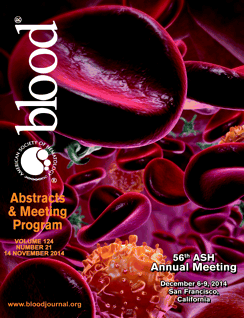Abstract
Introduction: MUC1 is an oncoprotein that is aberrantly expressed in many epithelial tumors and hematologic malignancies, conferring cell growth and survival. Expression and functional significance of MUC1 in cutaneous T-cell lymphoma (CTCL) has not been previously characterized. In the present study, we evaluated the potential role that MUC1 mediated signaling plays in the pathogenesis of Mycosis Fungoides (MF) and Sezary Syndrome cells (SS), the 2 common subtypes of CTCL.
Methods and results: MUC1 was strongly expressed on the SS cell lines HuT-78 (60%), H9 (77%) and SeAx (59%) and the MF cell lines, Myla (94%) and HuT-102 (87%) when incubated with anti-MUC1 antibody and analyzed by flow cytometry (FCM) . In contrast, B-cell lymphoma (BCL) cell lines (Val, K422, Toledo, SU-DHL-2, OCI-Ly7, OCI-Ly8, SU-DHL-5, SU-DHL-8, OCI-Ly3, RCK8, Ramos, Daudi, JVM-2) expressed minimal levels of MUC1 (0-7%), as did circulating T-cell populations isolated from healthy controls (0-3%). The finding of high MUC1 expression on CTCL and minimal expression on BCL and normal circulating T cells was confirmed byimmunoblotting (IB) with another antibody directed against MUC1-C, the oncogenic subunit. The expression profile of MUC1-C was found to be similar at the mRNA level by RT-PCR analysis. We subsequently examined MUC1 as a therapeutic target in CTCL. We have developed an inhibitor of the MUC1-C receptor subunit, designated GO-203, which blocks MUC1-C dimerization necessary for nuclear translocation and downstream signaling. Growth inhibition was determined using CellTiter-Glo that measures ATP produced by live and proliferating cells and demonstrated that the concentration required to inhibit growth by 50% (IC50) following 72-hour exposure ranged from 3 uM to 3.5 uM in most cell lines (HuT-78, H9 and Myla). Culture of HuT-78, H9 and Myla cells in the presence of 5 uM GO-203 concentration for 72-hours resulted in 70, 80 and 90% cell death respectively as determined by Annexin V and propidium iodide staining by FCM. Cell proliferation, as assessed by incorporation of tritiated thymidine, was inhibited by 70% and 80% in 2 cell lines (HuT-78 and Myla respectively) when treated with GO-203 at concentration of 5 uM for 72-hours. To determine mechanism of action of GO-203 induced apoptosis in vitro, level of hydrogen peroxide (H2O2), a reactive oxygen species (ROS) was measured using FCM based conversion of carboxy-2′7′ dichlorodihydrofluorescein diacetate to 2′7′-dichlorodihydrofluorescein. Cell lysates were analyzed for expression of the protein TIGAR, a fructose-2-6-bisphosphatase p53-inducible regulator of glycolysis and apoptosis by IB. Exposure of Hut-78, Myla and H9 cells to GO-203 for 72-hours was associated with an increase in ROS and down regulation of TIGAR expression. To confirm ROS mediated apoptosis by GO-203, in vitro treatment with the antioxidant N-acetylcysteine (NAC) was performed and levels of H2O2 were measured including IB with anti-TIGAR antibody. Treatment with NAC blocked the decreases in TIGAR levels, supporting the hypothesis that this response was mediated by increases in ROS. The ability of GO-203 to eradicate disease was evaluated in vivo across a spectrum of tumor volumes in 2 xenograft mouse models. Five million HuT-78 and 2.5 million Myla cells were injected subcutaneously (SC) into NOD-SCID IL2Rgammanull (NSG) mice. Treatment with GO-203 was administered daily at the dose of 14mg/kg SC for 3 weeks. Tumor volumetric analysis by three-dimensional ultrasound (3D-US) in HuT-78 and Myla xenograft NSG mouse models demonstrated a statistically significant decrease in tumor volume in mice treated with GO-203 compared to control (In the HuT-78 xenograft, average tumor volume was 707 mm3 in the GO-203 treated arm versus 1171 mm3 in the control arm rendering a p-value of 0.0029; whereas in the Myla xenograft average tumor volume was 184 mm3 in the GO-203 treated arm versus 1080 mm3 in the control arm rendering a p-value of 0.0001).
Conclusion: The data demonstratesthat MUC1-C is highly expressed in CTCL cell lines, and that blockade of the oncogenic MUC1-C subunit with the peptide inhibitor GO-203 induces apoptosis in vitro and in vivo. Targeting MUC1-C in in vitro is associated with down-regulation of TIGAR and increases in ROS, indicating that MUC1-C functions in maintaining redox balance. Our results highlight the potential of MUC1-C to be an exciting new therapeutic target in CTCL.
Kufe:Genus Oncology: Consultancy, Equity Ownership.
Author notes
Asterisk with author names denotes non-ASH members.

